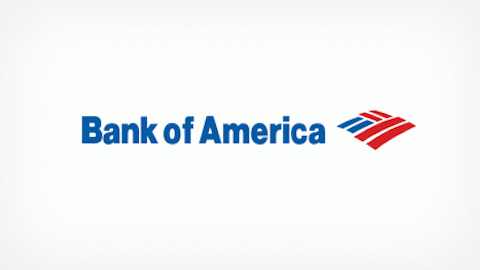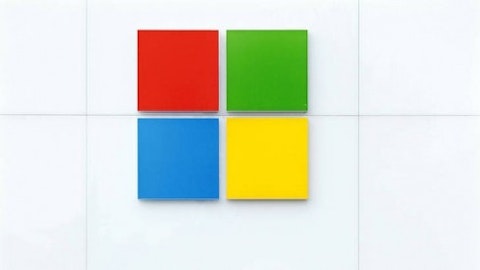JPMorgan Chase & Co. (NYSE:JPM) stands to be the biggest bank in the US by assets. Bloomberg reported that some of its analysts wrote in a research report to their investors that the biggest investment banks are “uninvestable,” questioning the universal bank business model’s future. The report recommends investors stay away from Goldman Sachs Group, Inc. (NYSE:GS) and favor Morgan Stanley (NYSE:MS), while there is no mention of JPMorgan Chase & Co. (NYSE:JPM) itself. Further, analysts at JPMorgan Chase & Co. (NYSE:JPM) believe Citigroup Inc. (NYSE:C) and Bank of America Corp (NYSE:BAC) will gain market share.

Headwinds
Among potential headwinds faced by the US banks is regulation, which when passed will lead the banks to hold capital up to 10%, while banks with over $400 billion in assets under management will be required to hold an additional 5% capital. This is against Basel III’s maximum requirement of 9.5% for banks with large and complex business models. While these capital requirements will partly act to make banks safer, they will also hinder the banks’ lending abilities, ultimately causing an economic slowdown.
Further, the banks are being pushed by the regulators to reduce their reliance on wholesale funding. Wholesale funding constitutes funding other than from core demand deposits, including public funds, foreign deposits, Federal funds and brokered deposits. During the 2008 financial meltdown, wholesale funding did not prove to be reliable.
Earnings Preview
It was believed that revenues from investment banking would not form a major part of the return on equity during the first quarter of the current year. Further, the Dodd-Frank Act will lead to lower projections of return on equity in 2015.
The first quarter’s revenue environment remains challenging as loan growth remains slow and net interest margins contract further. Also, revenues from mortgage banking are expected to decline as mortgage banking activity (origination volume) declined 6% sequentially. During the quarter, refinancing remained slow, while lower gain on sale margins can also be expected.
These pressures on the top line would lead most of the banks to control their cost effectively. However, the first quarter is usually marked with seasonally higher compensation expense.
The worst could be that the universal banks with large investment banking divisions would be required by the regulator to spin-off or restructure their securities business in order to tap funding as standalone businesses.
Given the challenging environment for US banks, JPMorgan Chase & Co. (NYSE:JPM), Citigroup Inc. (NYSE:C) and U.S. Bancorp (NYSE:USB) are best positioned to control their expenses and growth their top line.
Bank of America Corp (NYSE:BAC)
Bank of America Corp (NYSE:BAC) is expected to report its first quarter results tomorrow. Analysts have a core bottom line estimate of $0.23 per share, while core revenues are expected to come in at $24.1 billion, which should be 1% below the prior year’s results, however still 11% above the linked quarter’s results.
A potential positive hedge impact should expand the quarter’s spread income by $110 million to $10.7 billion. The net interest margin should also experience a sequential expansion of 5bps under the prevailing ultra-low interest rate environment. Further, core income should also see a year over year improvement of up to 14%. This improvement can largely be attributed to mortgage revenues, investment banking revenues and revenues from card income.
However, seasonally higher compensation expenses could hike the bank’s operating expenses to $18 billion from the prior quarter’s $16.1 billion figure. Since this is a seasonal hike in expenses, it should not cause concern.
Credit quality at Bank of America Corp (NYSE:BAC) should also see improvement driven by a 15% sequential decrease in the provision expenses and a 16% sequential decrease in the net charge-offs.
U.S. Bancorp (NYSE:USB)
U.S. Bancorp (NYSE:USB) is expected to disclose its first quarter performance today. Analysts have a bottom line estimate of $0.73 per share for the bank. Revenues for the first quarter are expected to come in at $5.1 billion, which is above the prior quarter’s and previous year’s results.
The bank experienced sluggish growth in loans while it also experienced pressure on its net interest margin. Apart from that, you will see healthy trends in the operating fee income, which should advance 4% over the linked quarter on higher merchant and ATM processing and treasury management fees. However, revenues accruing from mortgage banking will plunge due to a 5% decline in mortgage originations.
Besides, non-performing assets should plunge 6% over the prior quarter, while another 3% decline in the net charge-offs is expected.
Conclusion
Large banks are faced with regulatory headwinds aimed at making them safer. However, these regulations will hamper their lending abilities. Therefore, you can expect sluggish loan growth and the resultant pressure on the top line in the coming quarters. Banks with better expense management in place will be best positioned to outmaneuver the challenging times. Therefore, I recommend you invest in US Bancorp and Bank of America Corp (NYSE:BAC).
The article Can Sluggish Lending Sink These Banking Giants? originally appeared on Fool.com and is written by Adnan Khan.

